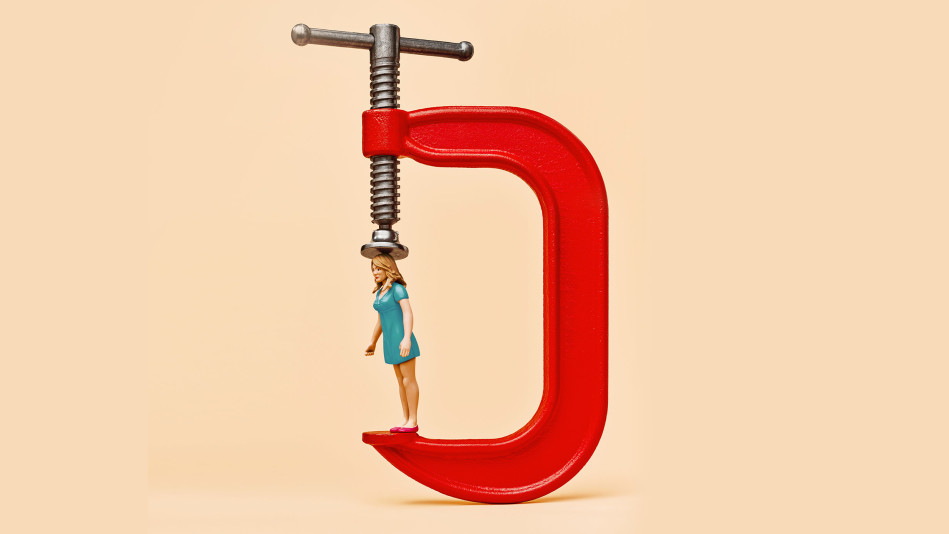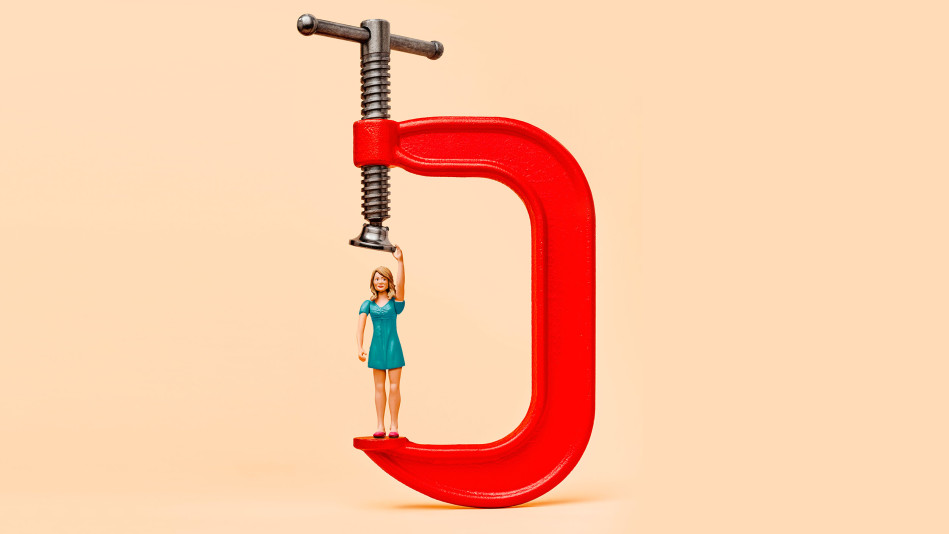Why Women Are More Likely to Suffer from Chronic Pain
Chronic, debilitating pain is the most widespread affliction of our time. So why are so many woman disproportionately feeling the pain?

Photo: Jamie Chung
Chronic, debilitating pain—the kind that lasts longer than three months—is the most widespread affliction of our time. It besets approximately 100 million adults in the U.S.—more than diabetes, heart disease, and cancer combined—and can upend sufferers' sleep, mood, appetite, relationships, and ability to function. The epidemic can be blamed, in part, on the fact that as a society we are living longer and gaining too much weight. Yet not everyone is suffering the consequences of these shifts equally—women are disproportionately feeling the pain.
This is not simply because women are likelier than men to report that they're hurting (though, in fact, they are); they're actually more apt to suffer from common chronic conditions like migraines, lower back pain, neck pain, and knee pain as well as certain autoimmune diseases, like rheumatoid arthritis, that cause persistent discomfort.
Hormones may play a key part in the gender gap, according to neuroscientist Jeffrey Mogil, PhD, head of McGill University's Pain Genetics Lab in Montreal. His lab research suggests that testosterone may switch on a pathway that leads males to process pain differently after puberty than females. Though researchers are still studying the underlying mechanisms that cause differences in pain response, other evidence shows that genetic abnormalities linked to estrogen may intensify pain in some women.
Making matters worse, studies have found that pain meds may not work as well for women as they do for men: Long-term opiate therapy relieves chronic pain in just 15 percent of us, according to a 2015 survey. And women in pain are less likely to be treated aggressively. "There's this lingering notion, even among some doctors, that because you're a woman, your pain isn't real or it's a normal part of being female," says Donna-Ann Thomas, MD, division chief of pain medicine at Yale University School of Medicine.

But the medical community's understanding of pain—and how it affects women—is undergoing a radical shift, adds Thomas. In 2010, the National Institutes of Health released a draft of its National Pain Strategy, the country's first tactical plan to develop best practices for assessing, treating, and managing pain. Since the report's initial release, the NIH has continued to study and highlight the issue of disparities in care and the ways in which clinicians can reduce gender bias; it recommends that doctors receive better training on the behavioral and biological differences that contribute to pain onset and management.
"Our approach is changing," says Thomas, who notes that broader treatment options are also gaining popularity. "Beyond just looking to manage pain with medication, the notion of addressing a patient's emotional, nutritional, and physical needs is finally catching on—and we're seeing very promising results." Pain may always be part of life, but pain without end may eventually be a thing of the past.
Keep Reading
This is not simply because women are likelier than men to report that they're hurting (though, in fact, they are); they're actually more apt to suffer from common chronic conditions like migraines, lower back pain, neck pain, and knee pain as well as certain autoimmune diseases, like rheumatoid arthritis, that cause persistent discomfort.
Hormones may play a key part in the gender gap, according to neuroscientist Jeffrey Mogil, PhD, head of McGill University's Pain Genetics Lab in Montreal. His lab research suggests that testosterone may switch on a pathway that leads males to process pain differently after puberty than females. Though researchers are still studying the underlying mechanisms that cause differences in pain response, other evidence shows that genetic abnormalities linked to estrogen may intensify pain in some women.
Making matters worse, studies have found that pain meds may not work as well for women as they do for men: Long-term opiate therapy relieves chronic pain in just 15 percent of us, according to a 2015 survey. And women in pain are less likely to be treated aggressively. "There's this lingering notion, even among some doctors, that because you're a woman, your pain isn't real or it's a normal part of being female," says Donna-Ann Thomas, MD, division chief of pain medicine at Yale University School of Medicine.

But the medical community's understanding of pain—and how it affects women—is undergoing a radical shift, adds Thomas. In 2010, the National Institutes of Health released a draft of its National Pain Strategy, the country's first tactical plan to develop best practices for assessing, treating, and managing pain. Since the report's initial release, the NIH has continued to study and highlight the issue of disparities in care and the ways in which clinicians can reduce gender bias; it recommends that doctors receive better training on the behavioral and biological differences that contribute to pain onset and management.
"Our approach is changing," says Thomas, who notes that broader treatment options are also gaining popularity. "Beyond just looking to manage pain with medication, the notion of addressing a patient's emotional, nutritional, and physical needs is finally catching on—and we're seeing very promising results." Pain may always be part of life, but pain without end may eventually be a thing of the past.
Keep Reading



